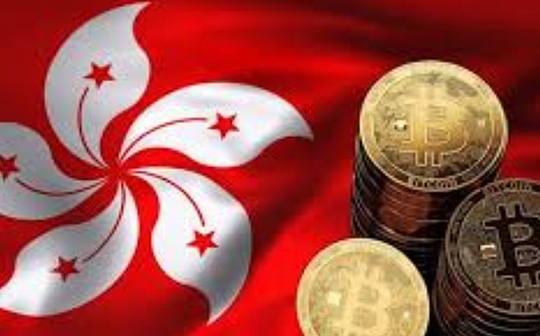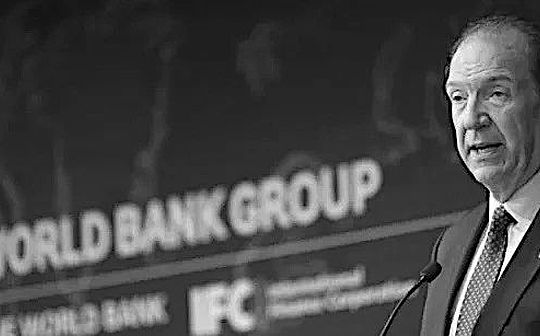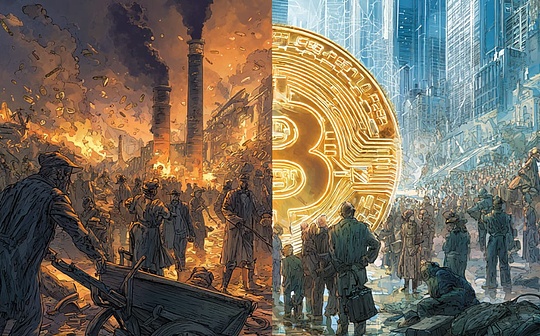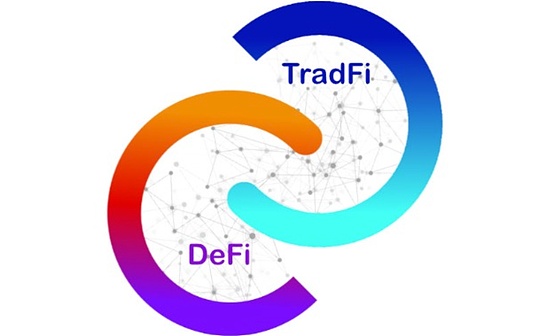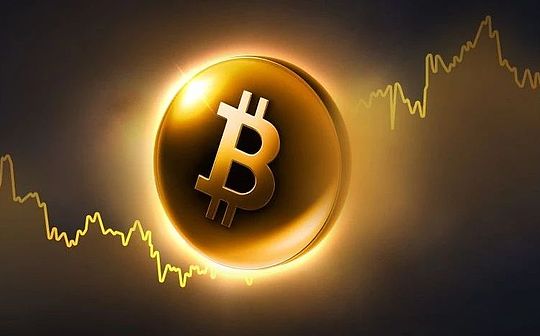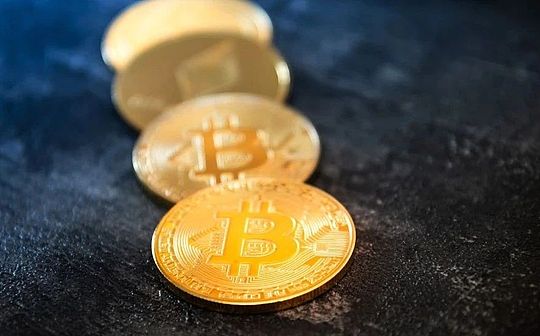
Author: Li Nannan, Source: “Get the Headlines”
Recently, there have been a lot of reports about stablecoins.There are official news, such as Trump’s signing of the Genius Act; the Stablecoin Ordinance of China, Hong Kong, came into effect on August 1.There are also some fraud cases that we don’t want to see, which are covered in stablecoins.
The official definition of stablecoins is,A digital currency that anchors real assets.But in addition to the simple definition, it is also mixed with peripheral concepts such as blockchain, web3.0, RWA, US debt crisis, US dollar hegemony, decentralization, the Genius Act, etc., which makes it a sudden increase in the difficulty of understanding it.
Today, we will introduce what stablecoins are, why they appear, and what imagination space is there in the future.I hope you can understand the key points immediately after reading the article and see the relevant news.
Hegemony and anti-hegemony: The long-term tug-of-war of the US dollar
first,If you want to understand stablecoins, you cannot just focus on the stablecoins themselves.
It’s like listening to a story. If you want to know who Sun Wukong is, you must first understand the story of the entire Journey to the West.Next, let’s talk about this story about stablecoins.
Some parts of the story are relatively simple, so we can only review it, and we will spend more time on the important part and stop to mark the key points.
Americans have always had a goal, and they hope that when countries around the world will use US dollars to settle their business.If I want to buy your things, I have to exchange my money for you first, and then exchange it for your country’s money after you receive the dollars.
What benefits does this do them?Obviously,First of all, the United States itself is almost in an absolutely safe position, because the whole world recognizes their money and never has to worry about not being able to buy things..
Secondly, they can easily influence the economies of other countries.For example, in order to facilitate buying things, other countries will exchange a large amount of money for US dollars, and these US dollar reserves are often found in US banks or financial institutions.At this time, if any country and the United States do not deal with each other, the United States can directly freeze their US dollar accounts.In addition, there are many benefits that are almost “unreasonable to talk about”.
This state is what we often call the hegemony of the US dollar.
So, since other countries know that they will be restrained by the United States, why do they still use the US dollar?Because the US dollar is stable enough.To put it bluntly, it has very stable purchasing power.
In the 1970s, the United States reached an agreement with Saudi Arabia, the world’s largest oil exporter, to sell military weapons to Saudi Arabia to ensure its homeland security.In return, Saudi Arabia will only charge US dollars when it sells all oil.No matter which country you are from, as long as you want to buy oil, you must first exchange your own country’s money for US dollars before you can buy it.Later, all oil exporting countries followed Saudi Arabia and formulated similar rules.
This means that as long as you have US dollars in your hand, you can always buy oil with certainty.Oil is a hard currency, and all countries need it.Therefore, when people recognize the value of oil, it is equivalent to recognize the value of US dollars.At the same time, combined with the United States’ political and military influence, other countries don’t have to worry about the US dollar suddenly turning into a piece of waste paper for various reasons.
This action of binding currency and oil is similar to what economics says.Anchor.We often say that the US dollar anchors oil, that’s what it means.
After anchoring oil, the dollar hegemony has been operating stably for many years, and the dollar has always been the world’s currency.In this process, the United States has gained a lot of benefits, and has also coaxed and scared it, and has used the hegemony of the dollar to interfere in the economies of other countries.
However, after this game has been running for many years, many problems have arisen.Some problems are obvious, and they are on the surface.There are also problems like the tip of the iceberg, which just appeared out of the water.
First, the binding between the US dollar and oil has become loose.
This is a key challenge, but it will not end the dollar hegemony immediately.After all, after so many years of operation, countries around the world have exchanged a lot of money for US dollars in trade.
The US dollar still accounts for the largest foreign exchange reserves in the world until now. In the first quarter of 2025, US dollar-denominated assets still account for 57.7% of the global foreign exchange reserves.The so-called US dollar-denominated assets include US dollar, US Treasury bonds, US dollar deposits, etc.
At the same time, the United States has formed a mature financial infrastructure in the past few years, and many countries have formed an inertial dependence on this.
To put it bluntly, although it is still convenient and reliable for many countries to use the US dollar at present, and the foundation behind the US dollar hegemony is very complex and will not be easily disintegrated.But in the long run, the challenge still exists.
Secondly, the dollar itself begins to experience a crisis of trust.
Everyone used to trust the US dollar, but now they all believe it, but they don’t believe it as much as before.There are many factors behind this. For example, the United States itself has huge debts. Now the U.S. debt has reached an unprecedented $37 trillion, and the interest to be repaid every year alone exceeds 1 trillion.The most extreme situation this may cause is that the United States pays off its debts by printing money, which will directly lead to the depreciation of the US dollar.
Of course, this is just an extreme assumption.The reality in the United States is much more complicated.But in any case,For a country, not owing debts or owing too much debt is not a good thing.Not owing debt means that the economic development is insufficient, and owing too much debt may make others worry.And the United States is currently in the latter situation.At the same time, the polarization and political confrontation within the United States have further aggravated people’s concerns about the US dollar.
Simply put, the United States owes a lot of debts to the outside world, and it is not peaceful internally.So many people may wonder whether the money it issued is as reliable as before.
Finally, based on the previous concerns, other countries cannot remain in place, let alone even without these problems, considering the abuse of financial sanctions by the United States in the past, other countries cannot want to be restrained by the United States all the time.
Therefore, many countries have long begun to try to de-dollarize.Although it was mentioned earlier that the US dollar still accounted for more than 57% of the world’s foreign exchange reserves in the first quarter of this year, it should be noted that this figure was 71% in 1999.The downward trend is very obvious.
In other words, the overall situation in the world at present is that the United States wants to continue the hegemony of the dollar, while many countries want to get rid of the hegemony of the dollar.Although in the short term, the establishment of US dollar hegemony is a very complicated process, which involves the interests of various countries, the military influence of the United States, etc.
But in the long run, this pull is obviously there.
Blockchain opens the door to the new world of Web3.0
The whole story develops to this point and the conflict reaches its peak.Just then, a key variable appeared, this thing is calledBlockchain.
There has been a lot of news about blockchain these years, but here we only need to remember one attribute of it.Blockchain opens up a new trading path.
The most core feature of blockchain is that this is a distributed accounting technology, which is decentralized.For example, in the past, Zhang San wanted to transfer 100 yuan to Li Si, and he needed to go through the bank. Zhang San initiated an application to the bank, and the bank then gave the money to Li Si.Although in reality, this process is so smooth that you cannot feel the existence of the bank, in fact, you still need to pass through the bank center.
Blockchain is just a distributed accounting technology, and transactions are one of its usage scenarios.Our story today is only aimed at this scene.In transactions, if Zhang San and Li Si both use blockchain technology, they can bypass banks.Zhang San initiated the operation and gave Li Si 100 yuan, and the money would be deducted directly from Zhang San’s account and transferred to Li Si’s account.There is no need to pass by anyone in the middle.
You might say that if there were no witnesses in the middle, wouldn’t this deal be empty?Not.Because blockchain transactions have a key design, called synchronization.As long as Zhang San initiates a transfer to Li Si, Zhang San’s account will also broadcast to all blockchain nodes in the world, telling everyone that I transferred 100 yuan to Li Si, and all blockchain nodes in the world will record this transaction.
To change one of the links, you have to first unravel all the subsequent links, which are endless, which is almost impossible.
This is another feature of blockchain, which cannot be tampered with.
Based on what was mentioned earlier, synchronous records and cannot be tampered with, many people believe that blockchain has great advantages and will become a key direction in the future.
If one day, the entire Internet reaches a decentralized state, I want to upload videos, but I don’t need to go through the video platform, I want to trade, but I don’t need to go through the bank.This state is called web3.0.
Stablecoins are the new dimension of financial game in the digital world
Seeing this, some people may say, what does it have to do with the hegemony of the US dollar after talking about so much blockchain?
Since the emergence of blockchain, a new transaction path has been opened up.So for the United States, if it can occupy this new trading path, it can continue the hegemony of the US dollar.If this new trading approach is abandoned, the dollar hegemony will be further lost.
Obviously, the United States will choose the former and occupy this new trading path.
How to occupy it?One of the most critical ways is to let everyone continue to use the currency issued by the United States in the world of blockchain.
If you want everyone to use the currency you issued, you must have advantages and usefulness.
Where does this advantage come from?This has to be mentioned, the original problems of various currencies in the blockchain.Originally, there were other types of currencies in the world of blockchain, such as Bitcoin, and various other so-called cryptocurrencies.
but,Although these currencies are nominally called currency, their essence is closer to collectibles.As long as someone recognizes its value and someone speculates it, it is worth it.As long as everyone doesn’t recognize it, it’s not worth it.Therefore, you can often see that the price of Bitcoin fluctuates very much.Obviously, such violent fluctuations are not suitable for use as currency.
in other words,Many so-called cryptocurrencies are not “stable” enough.Why is it unstable?Because they lack an anchor with stable value.Just like before the US dollar anchors oil, many cryptocurrencies do not associate with these real anchors.
Therefore, theoretically,If the currency you issue on the blockchain can solve this “stability” problem, then it has an advantage and others may be willing to use it..
What the United States uses to solve the “stability” problem is stablecoins.
Stable coins are divided into several categories, including algorithmic stablecoins, crypto asset-solidated stablecoins, and fiat currency-solidated stablecoins.The most mainstream and most likely the most mainstream in the future is the last one, fiat currency collateral stablecoin.
Why is it stable enough?The fiat currency is pledged to stablecoins, requiring the issuer to deposit one dollar into the bank for every stablecoin issued.If you issue 100 million pieces, you will need to save 100 million US dollars.Moreover, after depositing this money in the bank, the bank needs to isolate it from ordinary deposits and cannot lend it out at will.
This means thatAs long as I have a stablecoin in my hand, I can use it one to one to exchange it for US dollars at any time.Because there is always this money waiting for me to exchange in the bank.
Have you noticed that if you use stablecoins to trade in the digital world, you will be essentially close to using the US dollar.Because stablecoins anchor the US dollar, just like the US dollar anchored oil back then.
For the United States, stablecoins have two obvious benefits.
In the long run, it may continue the dollar hegemony into the digital world.It is equivalent to occupying a new trading path and taking the lead in the decentralized trading system..
In the short term, a considerable portion of the money deposited by stablecoin issuers in U.S. banks may be used to invest in U.S. Treasury bonds.Let the specific process be put aside, in any case,The more money you invest in US Treasury bonds is definitely a good thing for the United States.This can solve the debt problem in the United States to a certain extent.
Stablecoins themselves are not new, they have existed in the United States for many years.The Genius Act signed by Trump this year is essentially not an invention of stablecoins from 0 to 1, but rather establishing the legitimacy of stablecoins in the United States and issuing relevant regulations to promote the development of stablecoins from 1 to 100.
So, from the perspective of other countries outside the United States, would you hope to continue to be constrained by the hegemony of the US dollar in the digital world?Obviously not.
Therefore, many countries are also trying to issue their own stablecoins.For example, China has taken Hong Kong as a bridgehead and took the first step in trying.The “Stablecoin Ordinance” of Hong Kong, which came into effect on August 1 this year, is to support the legal and orderly development of our own stablecoins..
In other words, each party has a problem that each party wants to solve, and stablecoins become the intersection of these solutions.
For the United States, stablecoins are not only a way to alleviate the U.S. bond problem in the short term, but also a means to long-term attempt to extend the hegemony of the dollar to the digital world.For China, stablecoins are not only an effective supplement to trading channels, but also a key attempt to establish a right to speak in the digital world..
This is also why many people say that stablecoins are a new dimension of financial game in the digital world.
At this point, we briefly illustrate the past and present of stablecoins.It should be emphasized that today’s expression has been simplified in many aspects for the sake of easy understanding, and some dimensions have been abandoned, and the actual situation is much more complicated.

